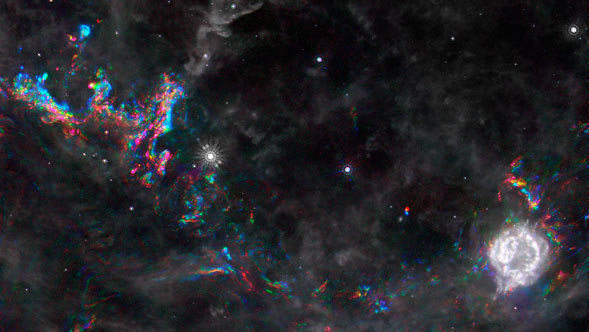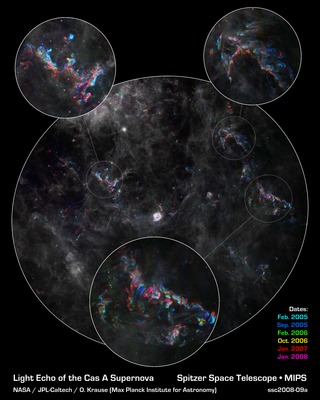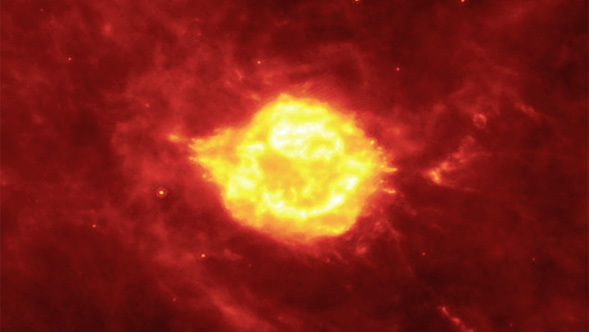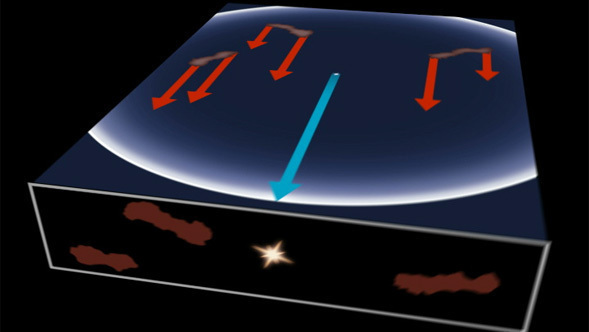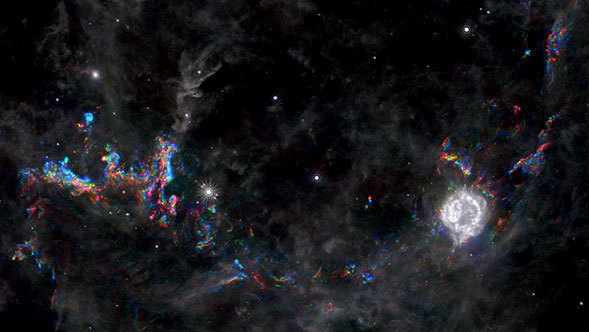Dissecting a Light Echo
Science Animations Video • May 5th, 2008 • ssc2008-09v2
This animation illustrates how a light echo works, and how an optical illusion of material moving outward is created.
A light echo occurs when a star explodes, acting like a cosmic flashbulb. The light from this explosion zips through nearby dust clumps, illuminating and heating them up slightly. This brief period of warming causes them to glow in infrared, like a chain of Christmas bulbs lighting up one by one.
The animation starts by showing the explosion of a star, which results in a flash of light that moves outward in all directions. The direction of our line of sight from Earth is indicated by the blue arrow.
When the light flash reaches surrounding dust, shown here as three dark clouds, the dust is heated up, creating infrared light that begins to travel toward Earth (indicated by the red arrows). Dust closest to the explosion lights up first, while the explosion's shock wave takes longer to reach more distant material. This results in light from different parts of the cloud reaching Earth at different times, creating the illusion of motion over time.
As the animation shows, the inclination of the cloud toward our line of sight can result in the material seeming to move both away from and toward the central star.
Video Credit: NASA/JPL-Caltech
